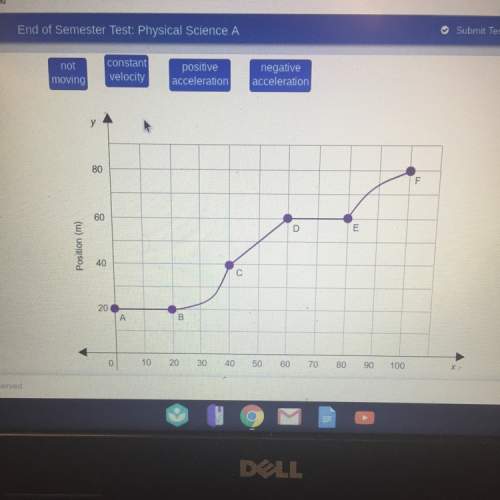
Physics, 06.11.2019 03:31 bvolleyball9
Suppose you throw a rock nearly straight up at a coconut in a palm tree and the rock just misses the coconut on the way up but hits the coconut on the way down. neglecting air resistance and the slight horizontal variation in motion to account for the hit and miss of the coconut, how does the speed of the rock when it hits the coconut on the way down compare with what it would have been if it had hit the coconut on the way up?

Answers: 3


Another question on Physics

Physics, 21.06.2019 22:40
In physics the desire of an object to keep doing what it is doing is termed?
Answers: 1

Physics, 22.06.2019 17:00
Two manned satellites approaching one another at a relative speed of 0.550 m/s intend to dock. the first has a mass of 2.50 ✕ 103 kg, and the second a mass of 7.50 ✕ 103 kg. assume that the positive direction is directed from the second satellite towards the first satellite. (a) calculate the final velocity after docking, in the frame of reference in which the first satellite was originally at rest.(b) what is the loss of kinetic energy in this inelastic collision? (c) repeat both parts, in the frame of reference in which the second satellite was originally at rest. final velocity(d) loss of kinetic energy = ?
Answers: 2


Physics, 23.06.2019 07:00
Conventional hot-water heaters consist of a tank of water maintained at a fixed temperature. the hot water is to be used when needed. the drawback is that energy is wasted because the tank loses heat when it is not in use, and you can run out of hot water if you use too much. some utility companies are encouraging the use of on-demand water heaters (also known as flash heaters), which consist of heating units to heat the water as you use it. no water tank is involved, so no heat is wasted. a typical household shower flow rate is 2.50 gal/min (9.46 l/min ) with the tap water being heated from 51.0 ˚f (10.6 ˚c) to 120 ˚f (48.9 ˚c) by the on-demand heater.what rate of heat input (either electrical of from gas) is required to operate such a unit, assuming that all the heat goes into the water?
Answers: 3
You know the right answer?
Suppose you throw a rock nearly straight up at a coconut in a palm tree and the rock just misses the...
Questions

Biology, 03.07.2019 19:30

Mathematics, 03.07.2019 19:30

Social Studies, 03.07.2019 19:30

Computers and Technology, 03.07.2019 19:30

Mathematics, 03.07.2019 19:30

Biology, 03.07.2019 19:30


Social Studies, 03.07.2019 19:30


Computers and Technology, 03.07.2019 19:30




Mathematics, 03.07.2019 19:30




Physics, 03.07.2019 19:30


Mathematics, 03.07.2019 19:30

 = K + U = ½ m vf² + m g h
= K + U = ½ m vf² + m g h
 - 2gh)
- 2gh)


